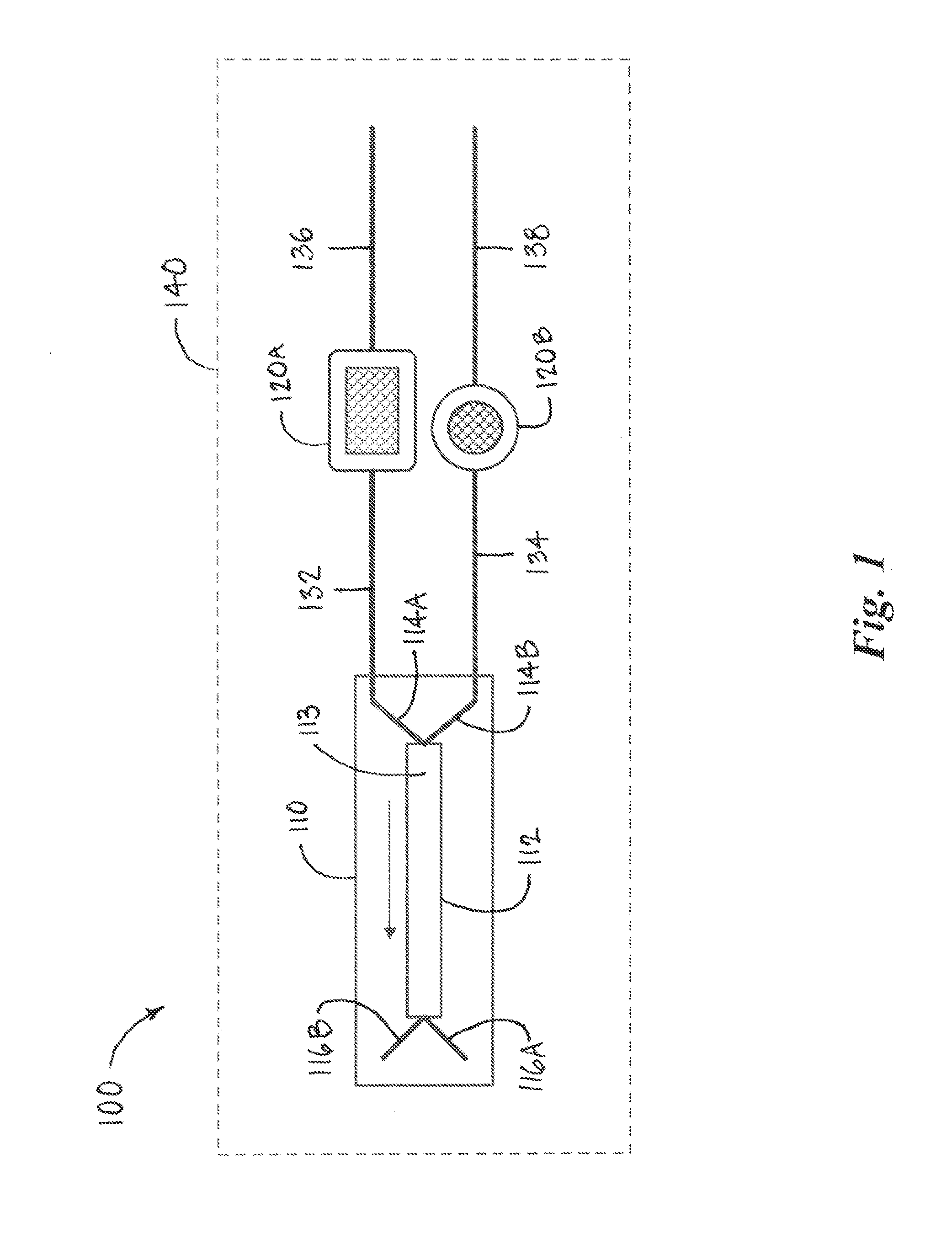Removing bubbles in microfluidic systems
a microfluidic system and bubble technology, applied in the field of microfluidic systems, can solve the problems of affecting the operation of the system, harming the biologic elements, and impede the flow of fluid through the system
- Summary
- Abstract
- Description
- Claims
- Application Information
AI Technical Summary
Benefits of technology
Problems solved by technology
Method used
Image
Examples
Embodiment Construction
[0027]For purposes of illustration, aspects of the present invention will be described in the context of diagrammatic examples of microfluidic systems according to embodiments of the invention. As used herein the terms fluidic and microfluidic, unless the context clearly indicated otherwise, are used interchangeably. While the inventions may, in some circumstances, be better suited for use with microfluidic devices and systems, the inventions may, in some circumstances, also be better suited for use with fluidic devices and system.
[0028]The invention is directed to a microfluidic system that includes one or more microfluidic devices connected to other devices or components that make up a microfluidic system or a part thereof. As used herein the term microfluidic device is intended to refer to devices that include one or more microfluidic channels that are adapted to carry fluids between components. In accordance with some embodiments of the invention, the cross-sectional distance of...
PUM
| Property | Measurement | Unit |
|---|---|---|
| cross-sectional distance | aaaaa | aaaaa |
| cross-sectional distance | aaaaa | aaaaa |
| thickness | aaaaa | aaaaa |
Abstract
Description
Claims
Application Information
 Login to View More
Login to View More - R&D
- Intellectual Property
- Life Sciences
- Materials
- Tech Scout
- Unparalleled Data Quality
- Higher Quality Content
- 60% Fewer Hallucinations
Browse by: Latest US Patents, China's latest patents, Technical Efficacy Thesaurus, Application Domain, Technology Topic, Popular Technical Reports.
© 2025 PatSnap. All rights reserved.Legal|Privacy policy|Modern Slavery Act Transparency Statement|Sitemap|About US| Contact US: help@patsnap.com



